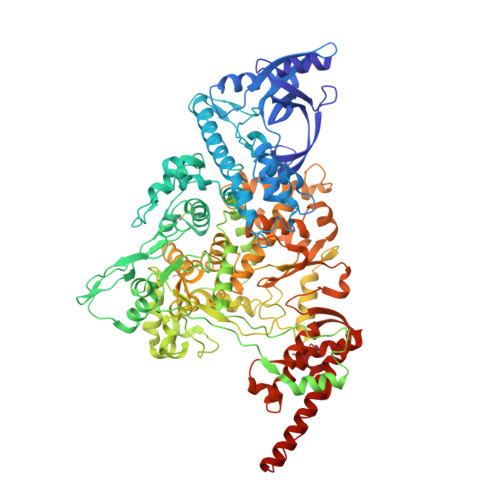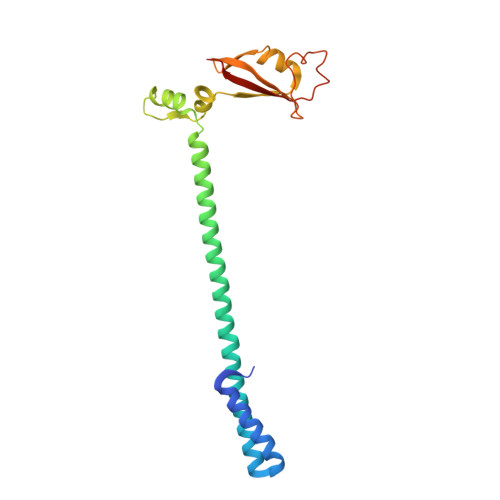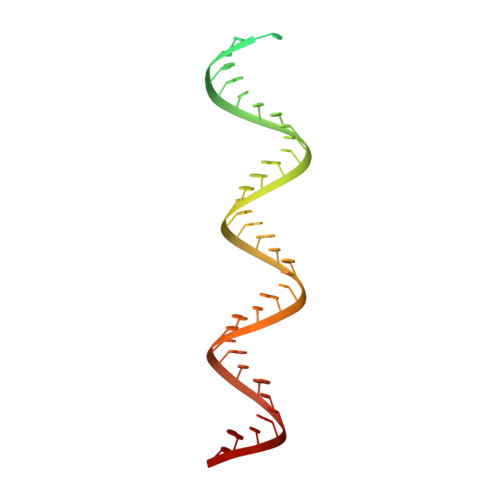Structural basis for substrate selection by the SARS-CoV-2 replicase.
Malone, B.F., Perry, J.K., Olinares, P.D.B., Lee, H.W., Chen, J., Appleby, T.C., Feng, J.Y., Bilello, J.P., Ng, H., Sotiris, J., Ebrahim, M., Chua, E.Y.D., Mendez, J.H., Eng, E.T., Landick, R., Gotte, M., Chait, B.T., Campbell, E.A., Darst, S.A.(2023) Nature 614: 781-787
- PubMed: 36725929
- DOI: https://doi.org/10.1038/s41586-022-05664-3
- Primary Citation of Related Structures:
7UO4, 7UO7, 7UO9, 7UOB, 7UOE - PubMed Abstract:
The SARS-CoV-2 RNA-dependent RNA polymerase coordinates viral RNA synthesis as part of an assembly known as the replication-transcription complex (RTC) 1 . Accordingly, the RTC is a target for clinically approved antiviral nucleoside analogues, including remdesivir 2 . Faithful synthesis of viral RNAs by the RTC requires recognition of the correct nucleotide triphosphate (NTP) for incorporation into the nascent RNA. To be effective inhibitors, antiviral nucleoside analogues must compete with the natural NTPs for incorporation. How the SARS-CoV-2 RTC discriminates between the natural NTPs, and how antiviral nucleoside analogues compete, has not been discerned in detail. Here, we use cryogenic-electron microscopy to visualize the RTC bound to each of the natural NTPs in states poised for incorporation. Furthermore, we investigate the RTC with the active metabolite of remdesivir, remdesivir triphosphate (RDV-TP), highlighting the structural basis for the selective incorporation of RDV-TP over its natural counterpart adenosine triphosphate 3,4 . Our results explain the suite of interactions required for NTP recognition, informing the rational design of antivirals. Our analysis also yields insights into nucleotide recognition by the nsp12 NiRAN (nidovirus RdRp-associated nucleotidyltransferase), an enigmatic catalytic domain essential for viral propagation 5 . The NiRAN selectively binds guanosine triphosphate, strengthening proposals for the role of this domain in the formation of the 5' RNA cap 6 .
Organizational Affiliation:
Laboratory of Molecular Biophysics, The Rockefeller University, New York, NY, USA.





















